Resources
Newsletter
Stay up to date and with the latest news, projects, deals and features.
Subscribe
It will be more boat shoes and Bollinger than Saville Row suits and cigars.
Not only that—yes, it will be floating.
But while the Gold Coast has always done things its own way, the more things change, the more they stay the same in the centuries old tradition of private members’.
White’s in London’s affluent St James—with its unlikely beginnings as a hot chocolate emporium dating back to 1693— is regarded as the oldest and one of the most exclusive private clubs in the world, numbering the newly crowned King Charles III among its members.
In the intervening 330 years, however, global wealth has grown exponentially and with it so too have lifestyle expectations.
And that rarified world of privileged privacy and high-class decadence—with doors firmly closed to all but the most influential and wealthy—is now being unlocked and taken to the next level in high-end residential developments strictly curated for the uber rich.
Private residents’ clubs have emerged from the pandemic years as the new pinnacle of ultra-luxury living.
Integrated within developments, they offer high-net-worth individuals an in-house haven with upscale services, amenities and ambience where they can work-from-club or relax socially beyond the sprawling expanse of their own four walls.
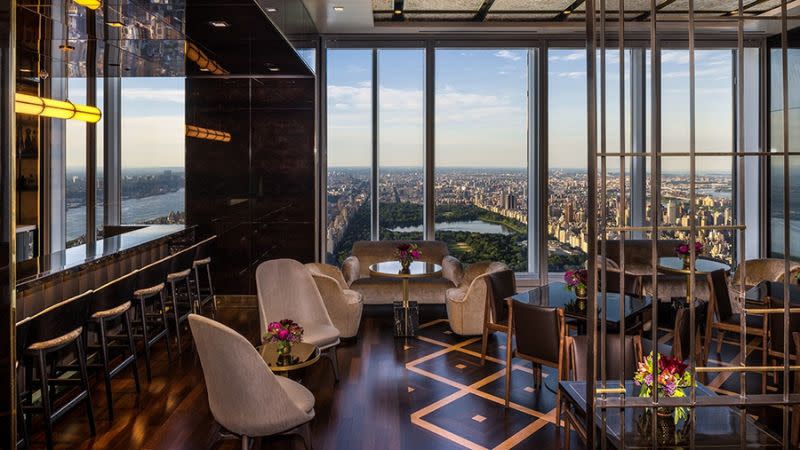
And, importantly, they provide that same much-prized sense of privacy and exclusivity as the members’ clubs of old.
Last year, 100 floors above New York City’s so-called billionaire’s row on 57th Street, the doors opened to Central Park Club, the world’s highest private club. It sits atop Central Park Tower, the world’s tallest residential building comprising 179 condominiums with prices starting around $9.5 million.
Only the tower’s residents can become members and access the club’s three floors of lavish amenities—including a private bar and restaurant with seasonal menus from Michelin-star chefs, a wine and cigar lounge, indoor and outdoor pools, a sun deck, private garden, fitness and wellness centre as well as a 120-seat grand ballroom.
You get the extravagant picture.
In Australia—where 122,000 millionaire migrants are expected to flock this year alone—the concept also has been quickly embraced at the upper echelons of the market and is being taken to another decadent extreme.
On the Gold Coast, developer Tim Gordon is delivering a double-storey floating private residents’ club as part of Gordon Corporation’s $300-million-plus The Mantaray Marina and Residences project on The Spit.
With the price tags of some of its 24 apartments—half with rooftop pools—exceeding $20 million, it is targeting the rising ranks of the super-rich and the superyachts they have been snapping up in record numbers.
The Mantaray is envisioned as much more than just a collection of eye-wateringly expensive homes fronting the Southport Broadwater.
It will include a retail plaza as well as a 67-berth superyacht marina with moorings for vessels up to 60m—the centrepiece of which will be a Rothelowman-designed elliptical over-water club lounge.
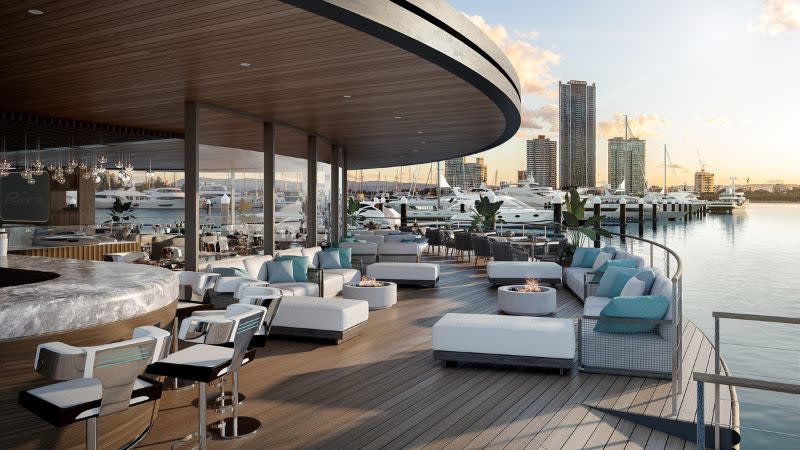
The floating Mantaray Club will be as exclusive as it gets. Spanning two levels, it has been designed exclusively for Mantaray residents and guests of the superyacht marina to come together to enjoy fine dining experiences, relax on the sun deck or entertain in the private dining and meeting rooms.
“When the rare opportunity to secure this absolute waterfront site on The Spit arose, we knew we needed to create something truly world-class,” Gordon says.
“The private members-only club will provide privileged access and private bar and dining experiences found nowhere else in the world, alongside a dedicated 24-hour concierge service and full-time security.
“In an era of curated lifestyle experiences, it’ll be unrivalled … a unique club and amazing on-water experience.”
Gordon says the industry has always had a role to play in creating social spaces for residents to connect and create their own community.
“That has evolved from traditional recreation spaces such as pools and gymnasiums to more resort-style amenities, where health, wellness, dining and privacy all play an increasingly important role.
“For buyers, location will always be fundamental to their decision-making process, however, the curated lifestyle elements that exist within the home, and in the private confines of the development footprint, are proving equally important.
“It’s a dynamic that’s driving innovation in our sector and puts the focus and investment back into quality design outcomes.”
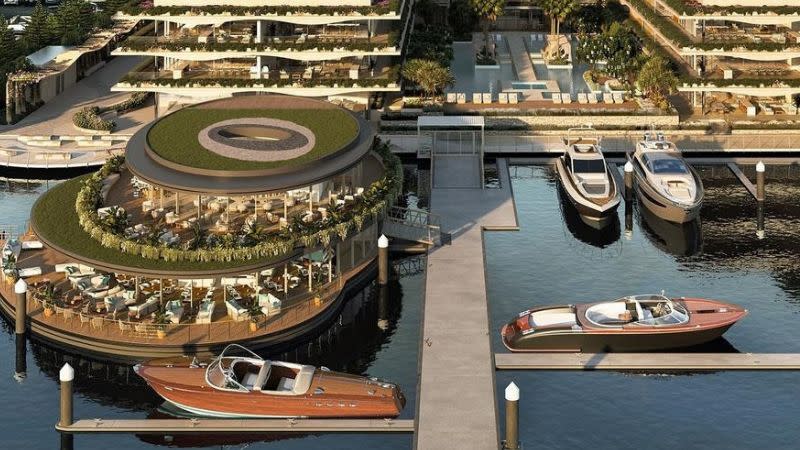
Rothelowman founding principal Kim Lowman agrees.
“Everyone’s trying to reinvent that extension of lifestyle,” he says. “The Mantaray Club is the extreme … it takes it to the next level with layers of sophistication and it’s pretty much at the very top end, certainly for Australia.”
He says the design inspiration for the club was taken from “that maritime existence, which is very much part of the Gold Coast”.
“It’s a very simple, beautiful shape evocative of that culture.”
Not too far down the road at Main Beach, developer Rory O’Brien is taking a similar tack with his $250-million Masthead Ocean Club development, comprising 28 whole-floor apartments.
Two other floors—levels 25 and 26—will be devoted to The Ocean Club, with membership only accessible with the purchase of one of the apartments, which start from $5.9 million.
The club includes a wine and champagne lounge, whiskey and cigar room, private dining space, coffee bar, library and business meeting areas as well as health and wellness facilities such as a pool, spa, steam room and sauna, state-of- the-art gym, yoga and pilates studios. Additional benefits include a Yarra Valley winery membership, participation in a racing syndicate and a new BMW electric car.
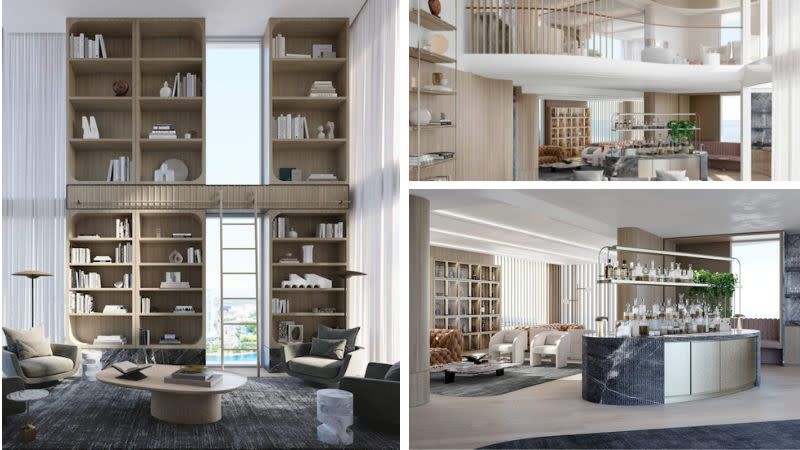
Adding to the development’s air of exclusivity, O’Brien has teamed with Banda, an interior design studio and development business founded by Edo Mapelli Mozzi, the husband of Princess Beatrice, elder daughter of Prince Andrew, Duke of York, and Sarah, Duchess of York.
“The exclusivity is two things,” O’Brien clarifies. “It’s the amenity in itself and the quality of the amenity, but it’s also the lack of numbers that really make it exclusive … if it’s in a building of 140 apartments, by definition, it just ain’t exclusive.
“So, it has got to be everything somebody could possibly want and not crowded. These people don’t want to go into a giant gym with 50 Kim Kardashian look-a-likes on the running machines. They want privacy.
“They’re the people who fly first class. They’re interested in the front four seats, not the 400 behind them.”
O’Brien says Covid has been a key catalyst for the growth in private residents’ clubs as well as an overall increase in demand for bigger and better in-house communal amenities across the residential development spectrum.
“You can’t pin it all on Covid but it did change people’s living patterns—how they live, how they work, what their preferences were … and people’s homes have become their castles more than ever.”
Rothelowman’s Kim Lowman says the rise of the amenity-rich build-to-rent asset class in Australia also was likely to become increasingly influential in upping the amenity ante in the residential development sector.
“The advent of of build-to-rent, where they’re offering a significant amenity per person, that’s going to put pressure on the build-to-sell market to start offering similar levels of amenity,” he says.
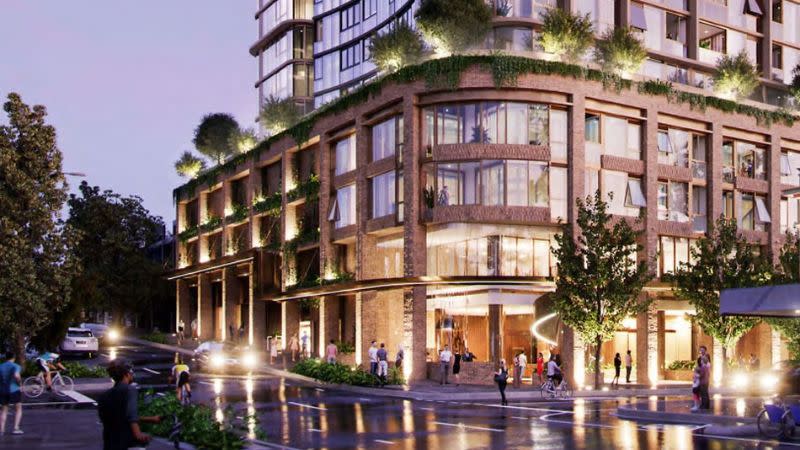
Frasers Property development executive general manager Cameron Leggatt says the amenities in the company’s first build-to-rent venture—Brunswick & Co with 366 apartments across 25 levels in Brisbane’s Fortitude Valley—will span 1891sq m “rivalling those of owner-occupier precincts”.
It amenities will include a rooftop pool and dog park, outdoor terraces, resident library, cinema and soundproof room for karaoke or podcasts. There will also be a cocktail bar, dining and entertainment areas, co-working office spaces, fitness centre and a treatment room.
“Equating to 5.9sq m of amenity per apartment—above the ratio often associated with a traditional residential complex—our design approach facilitates a sense of community among residents … while creating a sanctuary to come home to,” Leggatt says.
Cottee Parker Architects director Sandra Browne says the inclusion of curated, resident-only environments dedicated to socialising, working, food and drink, entertainment and wellness were now par for the course in most high-end apartment projects.
“Long gone are the days where you’d put a pool in, a few lounges and potentially a gym with a few weights.
“That just doesn’t hack it anymore—it has gone to another level.”
She says curated amenity offerings—whether the firm is designing boutique projects such as S&S Projects’ Esprit on the southern Gold Coast or Far East Consortium's $1 billion four-tower West Side Place complex in Melbourne’s CBD—are now a vital and non-negotiable element to giving residential developments an exclusive point of difference.
“I mean, it’s like if you live in this building, you're in an exclusive club. It’s that kind of mentality,” she says. “It has become a really important part of the offering … that exclusivity and the fact that ‘my tower has magnesium baths, what does yours have?’”
You are currently experiencing The Urban Developer Plus (TUD+), our premium membership for property professionals. Click here to learn more.
